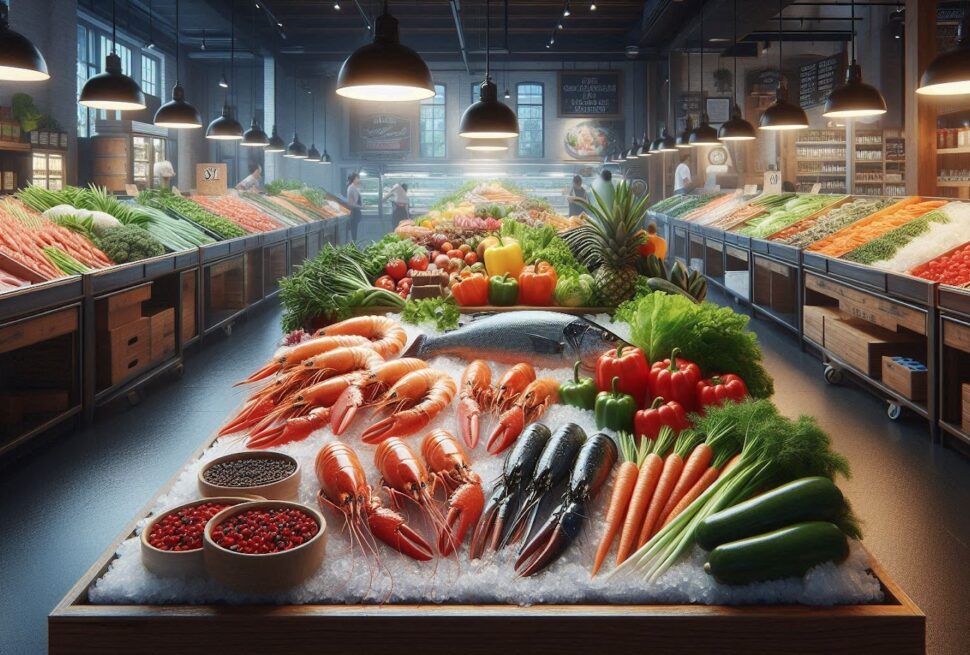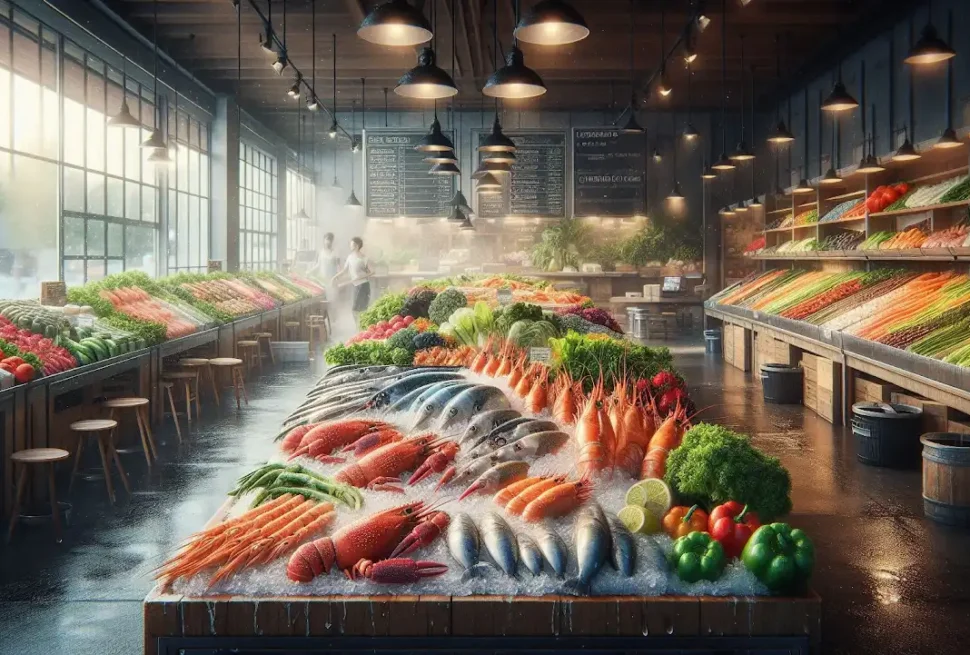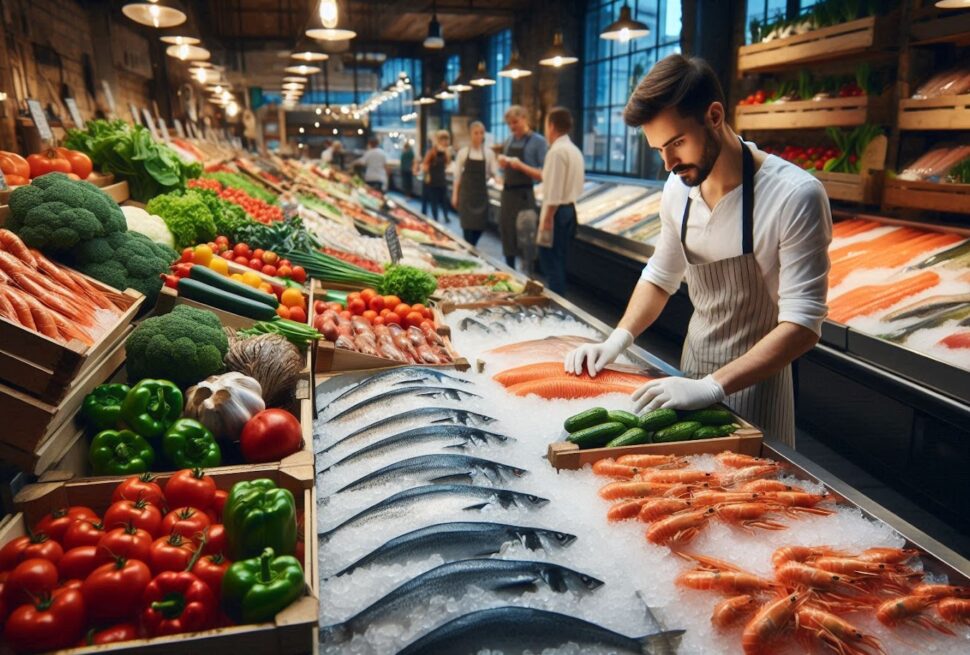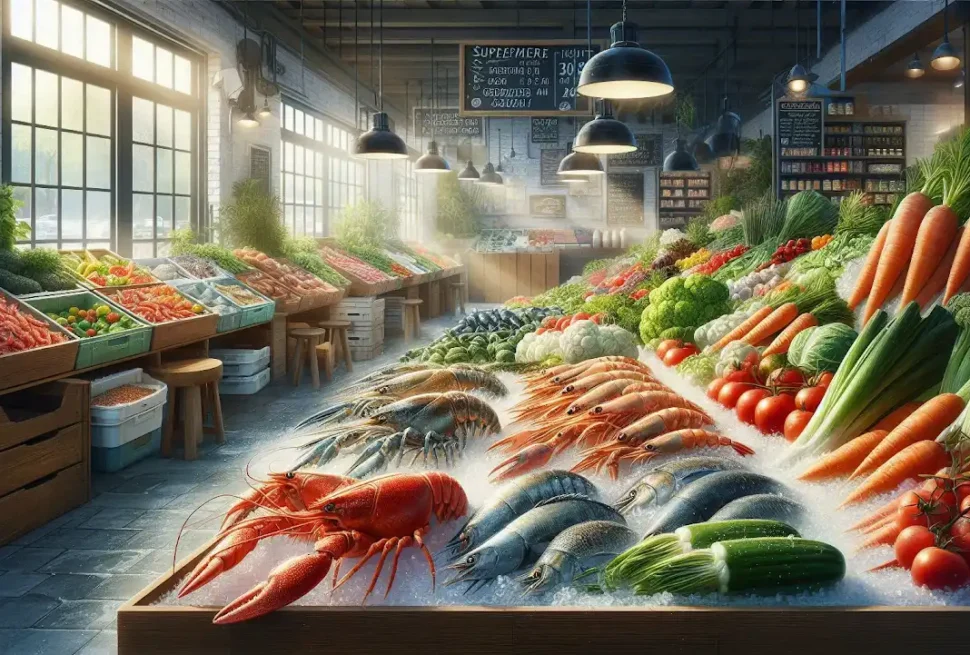Maritime Heritage Meets Modern Real Estate
Dubai’s rich maritime heritage continues to influence its contemporary real estate landscape, particularly evident in the thriving seafood markets that anchor various residential communities. These bustling marketplaces serve as vital indicators of neighborhood vibrancy and local amenity access, crucial factors for prospective homebuyers. The proximity to fresh seafood markets often correlates with premium property values, reflecting the emirate’s enduring connection to its coastal roots and the growing emphasis on lifestyle-oriented residential choices.
The integration of traditional fish markets into Dubai’s modern urban fabric has created unique microeconomies that significantly impact surrounding property developments. These markets not only serve as cultural landmarks but also contribute to the overall appeal of nearby residential areas, offering convenient access to fresh produce and creating vibrant community spaces that enhance property desirability.
Understanding the relationship between Dubai’s seafood markets and residential real estate provides valuable insights for homebuyers seeking properties that combine cultural authenticity with modern convenience. The strategic location of these markets often indicates well-established infrastructure, strong community ties, and potential for property value appreciation.
The synergy between traditional markets and contemporary living spaces reflects Dubai’s successful blend of heritage preservation and urban development, making properties near these markets particularly attractive to both local and international buyers seeking authentic experiences within their residential environment.
Waterfront Districts and Market Accessibility
The strategic distribution of seafood markets across Dubai’s waterfront districts creates distinct advantages for residential property selection. Developments along the coast benefit from proximity to these markets, with many offering direct access through dedicated transport links or pedestrian walkways. This accessibility factor significantly influences property valuations and rental yields in surrounding areas.
Transportation infrastructure surrounding these markets has evolved to accommodate both traditional and modern needs, with many areas featuring integrated public transport systems that connect residential zones to market districts. This connectivity enhancement has led to increased property demand in previously overlooked neighborhoods, creating new opportunities for strategic real estate investment.
The planning authorities have implemented specialized zoning regulations around major seafood markets, ensuring that residential developments maintain appropriate distances while maximizing accessibility. These urban planning considerations have resulted in the creation of well-balanced neighborhoods that preserve market authenticity while meeting modern living standards.
Recent infrastructure upgrades around key market locations have further improved the appeal of nearby residential properties, with enhanced parking facilities, climate-controlled walkways, and pedestrian bridges making market access more convenient for residents throughout the year.
The Hidden Influence of Local Trade
Beyond their obvious role as food sources, Dubai’s seafood markets significantly impact the social and economic dynamics of surrounding residential areas. These markets create employment opportunities and stimulate local business growth, contributing to the overall stability and attractiveness of nearby neighborhoods for potential homebuyers.
Market-adjacent properties often benefit from specialized amenities and services that cater to both market operations and residential needs. This dual-purpose infrastructure development has led to the emergence of unique residential ecosystems that offer enhanced lifestyle benefits for residents.
The presence of active trading communities around seafood markets often correlates with strong property maintenance standards and community engagement levels. These factors contribute to stable property values and create resilient neighborhoods that weather market fluctuations more effectively than areas lacking such established commercial anchors.
The economic activity generated by these markets extends beyond direct trade, creating secondary business opportunities that enhance the overall appeal of residential areas. This multiplier effect often results in more diverse local services and amenities, making market-proximate properties increasingly attractive to potential buyers.
Investment Patterns and Market Proximity
Historical data reveals interesting correlations between property value trends and proximity to established seafood markets in Dubai. Properties within walking distance of well-maintained markets typically demonstrate stronger value retention and more consistent appreciation rates compared to similar properties in other locations.
Investment analysis shows that residential developments near modernized seafood markets often attract a diverse buyer demographic, including both end-users and investors. This broad appeal contributes to market stability and provides multiple exit options for property owners, enhancing the overall investment potential.
The renovation and modernization of traditional seafood markets have frequently preceded broader neighborhood regeneration efforts, making early property investment in these areas particularly rewarding. Understanding these development patterns helps buyers identify emerging opportunities in areas slated for market improvements.
Property developers increasingly recognize the value of seafood market proximity, incorporating this feature into their marketing strategies and development planning. This trend has led to the creation of specialized residential products that capitalize on market accessibility while maintaining modern living standards.
Sustainability and Property Selection
The sustainability practices of Dubai’s seafood markets increasingly influence property decisions among environmentally conscious buyers. Markets that implement advanced waste management systems and sustainable fishing practices often anchor more desirable residential communities, reflecting growing environmental awareness among property seekers.
Modern residential developments near sustainable markets frequently incorporate complementary green features, creating environmentally responsible living spaces that appeal to forward-thinking buyers. This alignment of values between commercial and residential spaces contributes to long-term community stability and property value preservation.
Environmental certification standards for both markets and residential properties have become important considerations in property selection. The presence of sustainably operated seafood markets often indicates broader neighborhood commitment to environmental responsibility, attracting buyers who prioritize these values.
The integration of sustainable practices in market operations has led to innovations in residential property design and management, with developers incorporating features that complement and support environmental initiatives. This symbiotic relationship enhances the overall appeal of market-adjacent properties to environmentally conscious buyers.
Cultural Integration and Living Experience
Properties near Dubai’s seafood markets offer unique living experiences that blend traditional charm with contemporary comfort. The cultural vibrancy of these areas creates distinctive neighborhood characteristics that appeal to buyers seeking authentic local experiences within their residential environment.
The preservation of traditional market practices alongside modern residential development has resulted in unique architectural and social landscapes. These environments offer residents opportunities to engage with local culture while enjoying modern amenities, creating highly desirable living spaces.
Community events and activities centered around seafood markets contribute to strong social bonds and enhanced quality of life for residents. This cultural integration adds significant intangible value to nearby properties, making them particularly attractive to buyers seeking connected community living.
Market areas often serve as cultural education centers, offering residents opportunities to learn about local traditions and sustainable practices. This educational aspect adds value to nearby properties, particularly for families and culturally interested buyers.
Navigating Market-Adjacent Property Options
Here are the key considerations for evaluating properties near Dubai’s seafood markets:
- Infrastructure quality and maintenance standards in market areas
- Walking distance and accessibility from residential units
- Noise levels and activity patterns during peak market hours
- Development plans for market modernization and area enhancement
- Local community engagement and cultural preservation initiatives
- Property type diversity and investment potential
- Environmental impact management systems
- Future development projections for surrounding areas
Successful property selection near seafood markets requires careful evaluation of both current conditions and future development potential. Understanding market operation schedules and their impact on daily life helps buyers make informed decisions aligned with their lifestyle preferences.
The relationship between property values and market proximity varies across different areas of Dubai, requiring detailed analysis of specific location characteristics. Factors such as market size, modernization level, and surrounding amenities significantly influence property suitability for different buyer profiles.
Professional property assessment services can provide valuable insights into market-proximate properties, helping buyers evaluate potential investments against their specific requirements and long-term objectives. These assessments should consider both tangible and intangible factors that contribute to property value and livability.




